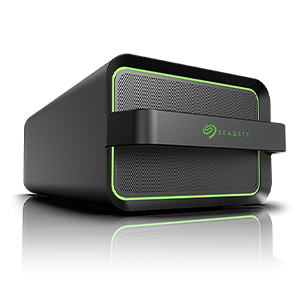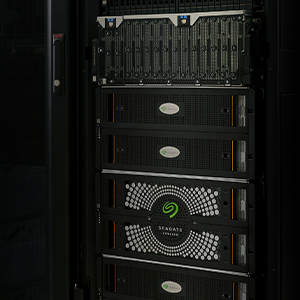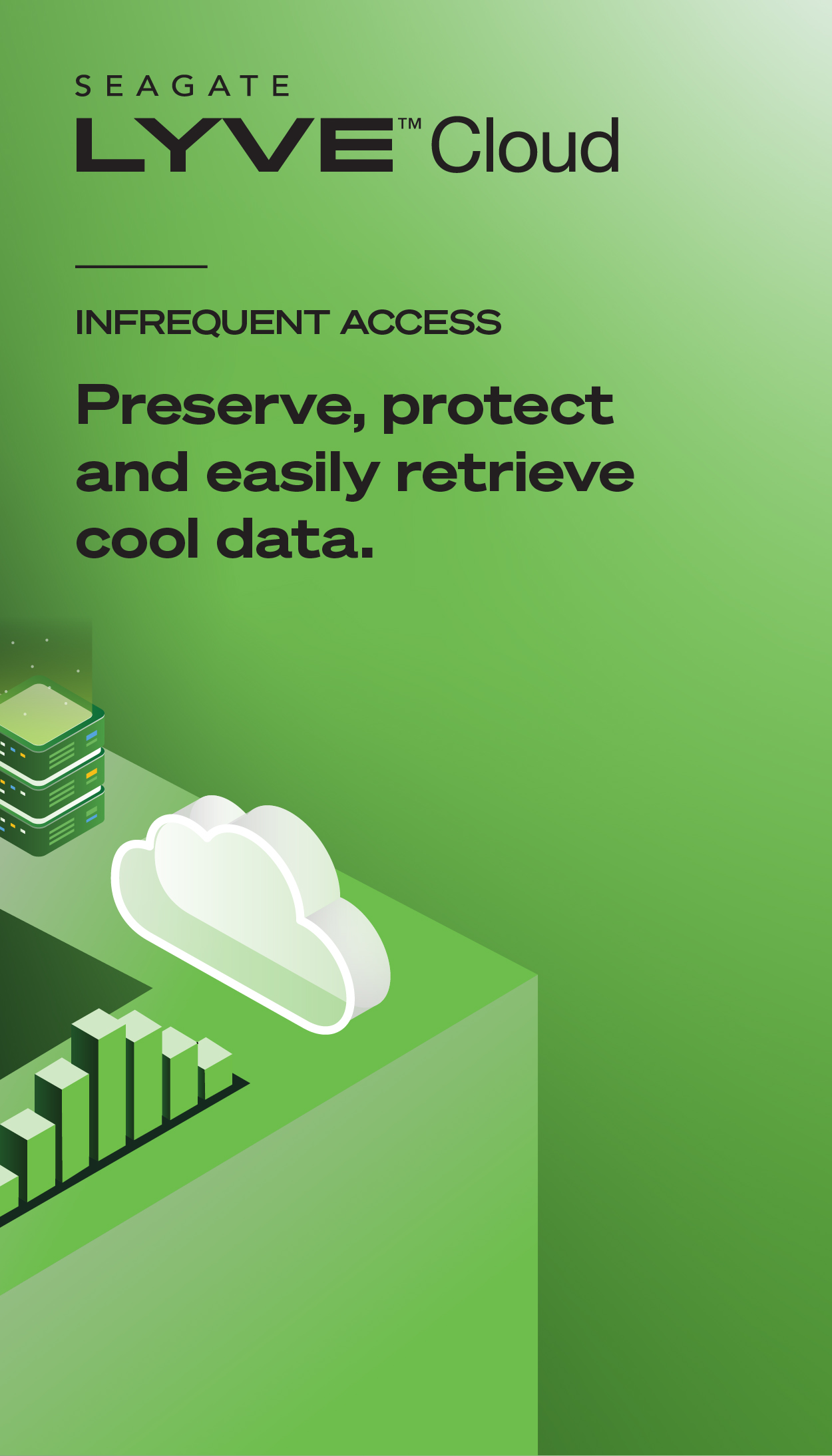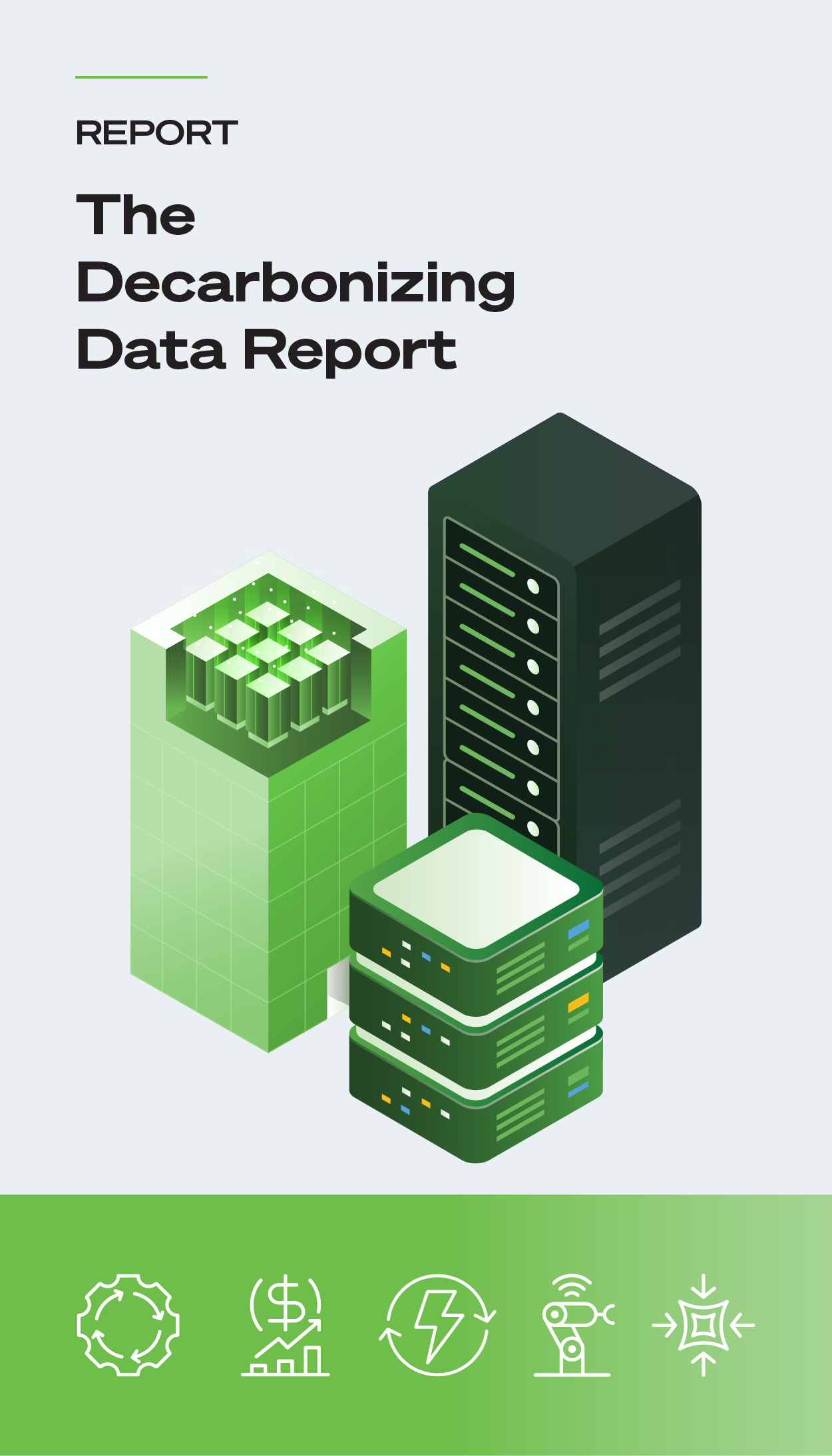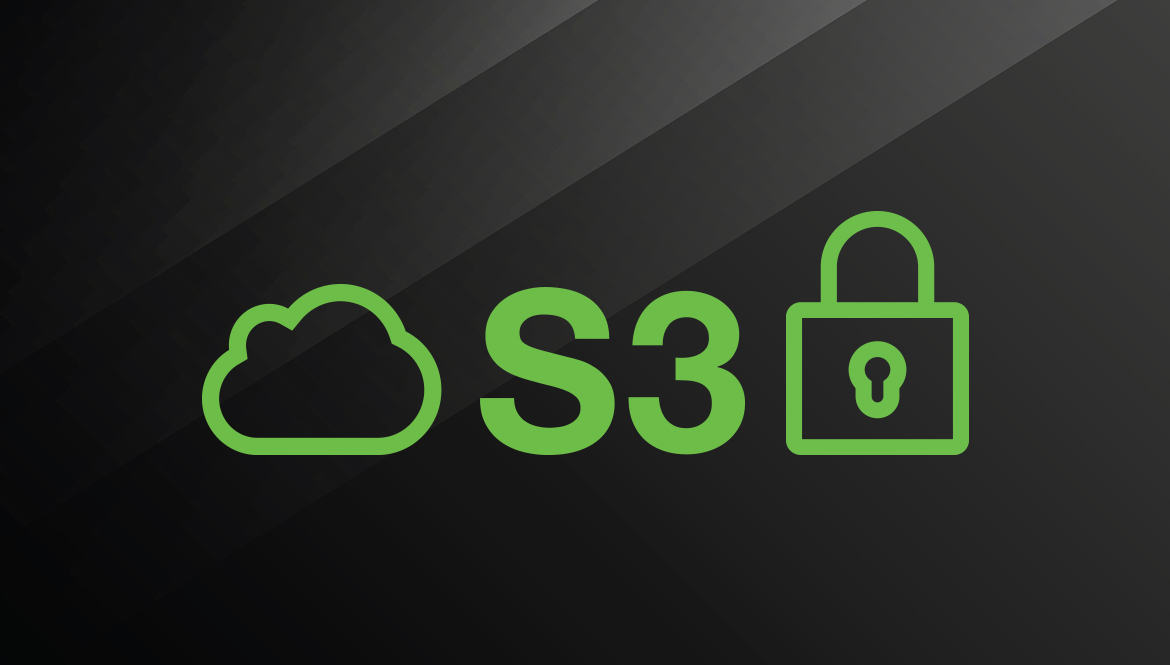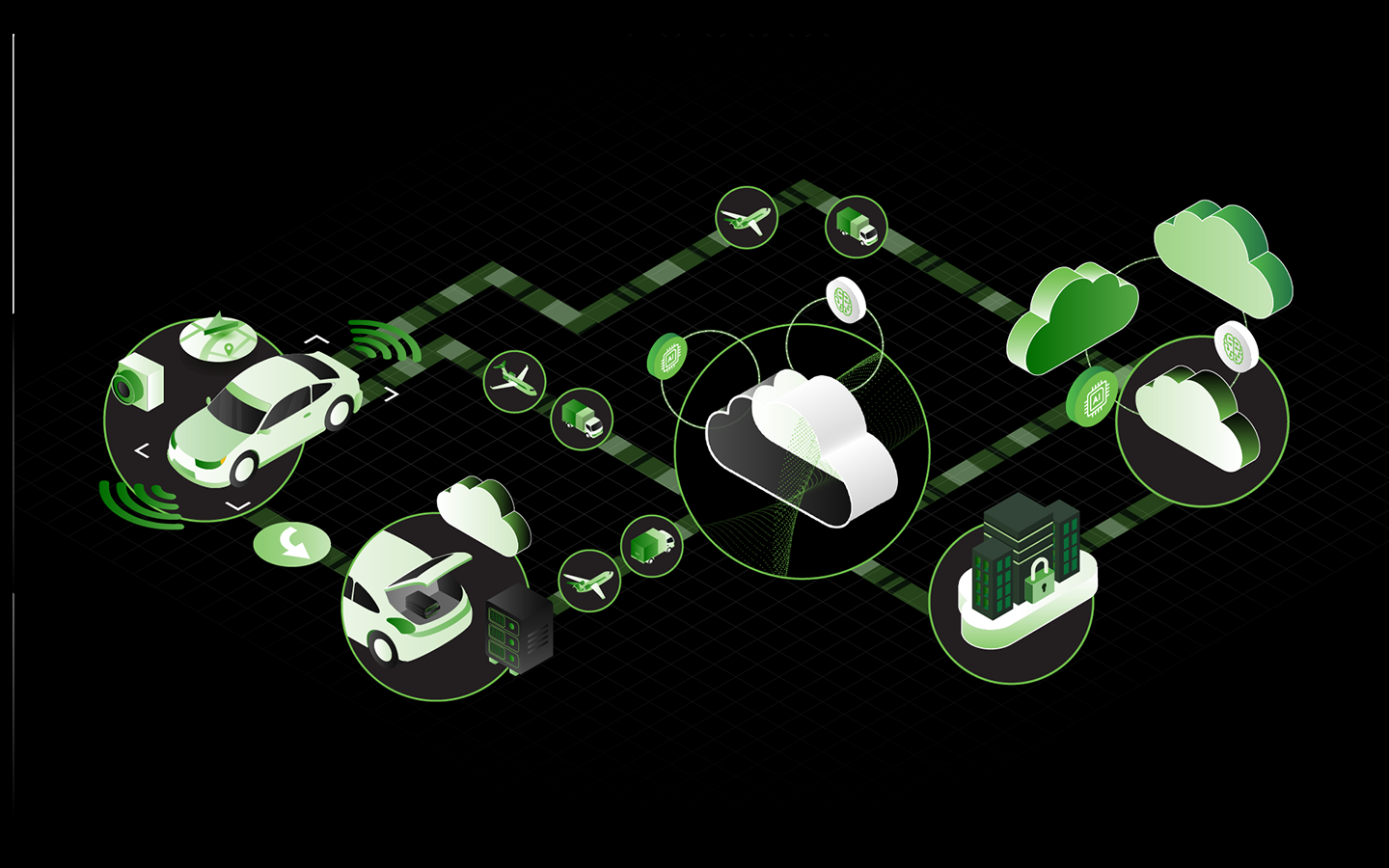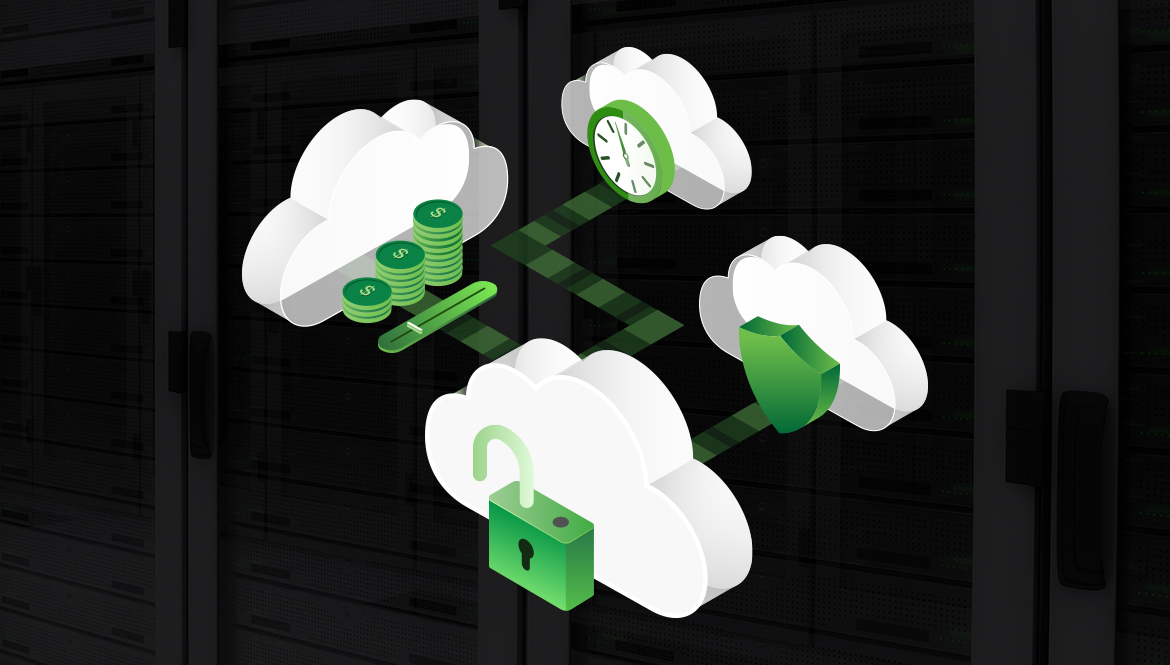As organizations accelerate their digital transformation, the question of where and how to deploy cloud infrastructure becomes increasingly critical. Among the most debated options are hybrid cloud and multicloud architectures—two strategies that offer distinct advantages but serve different business needs. While a hybrid cloud focuses on seamlessly integrating private and public environments for better control and governance, multicloud emphasizes provider flexibility, allowing businesses to optimize for performance, cost, or compliance by leveraging multiple cloud vendors.
Understanding the key differences between these models is essential not just from a technical standpoint, but also as a strategic business decision. In this post, we’ll explore what sets hybrid and multicloud apart, examine their respective benefits and challenges, and help you determine which approach (or combination of both) aligns best with your organization’s goals.
That said, discover how Lyve® Cloud can simplify your hybrid or multicloud strategy by providing secure, scalable storage, and no egress fees. Explore Lyve Cloud.
What is a multicloud?
A multicloud strategy uses cloud services from multiple providers to meet specific business needs. For example, a company might use AWS for computing, Azure for storage, and Google Cloud for machine learning. This approach lets organizations match each workload with the cloud platform that offers the best performance, pricing, or features.
Benefits of a multicloud strategy.
A multicloud strategy offers several key benefits for modern organizations.
First, it reduces vendor lock-in by distributing workloads across multiple cloud providers, giving businesses greater flexibility and negotiating power.
It also enhances resilience and business continuity, so if one provider experiences an outage, critical operations can continue via others.
Performance optimization is another advantage, as companies can choose the best provider for each workload based on geographic reach, specialized services, or cost-efficiency.
In regulated industries, multicloud can help meet compliance requirements by storing data in specific jurisdictions.
Additionally, it encourages innovation by allowing teams to experiment with diverse tools and technologies unique to each platform.
Overall, multicloud empowers businesses to align IT resources with strategic goals, improve agility, and stay competitive in a rapidly evolving digital landscape.
Drawbacks of adopting a multicloud strategy.
While a multicloud strategy offers flexibility and resilience, it also comes with several challenges.
One of the main drawbacks is increased complexity. Managing multiple cloud platforms means dealing with different interfaces, APIs, security models, and billing systems, which can strain IT teams and increase the risk of misconfigurations.
Integration and interoperability can also be difficult, especially when trying to sustain consistent performance and data flow between platforms.
Security and compliance become more complicated as each provider has its own controls, requiring a unified governance approach to avoid gaps.
Additionally, cost management can be tricky. Without centralized visibility, organizations may struggle to track usage and optimize spending across providers.
Finally, there’s a skills gap to consider since managing multiple clouds often demands expertise in several ecosystems, which can increase training and staffing needs.
What is a hybrid cloud?
A hybrid cloud is a computing environment that combines on-premises infrastructure (or private cloud) with public cloud services, allowing data and applications to move between them seamlessly.
This approach gives organizations the flexibility to keep sensitive workloads in a private environment while leveraging the scalability and cost-efficiency of the public cloud for less critical tasks.
A hybrid cloud is ideal for businesses that need to meet strict compliance requirements, maintain low-latency access to data, or gradually transition to the cloud. It offers centralized management, better control over resources, and the ability to optimize performance and cost across different environments.
Benefits of a hybrid cloud.
A hybrid cloud strategy offers a powerful and flexible approach to IT infrastructure by combining private (on-premises or hosted) environments with public cloud services.
This model provides numerous benefits for organizations seeking to optimize performance, control costs, and support a variety of workloads.
One of the most significant advantages of a hybrid cloud is greater control over sensitive data. Organizations can keep critical workloads and data in private environments to meet data sovereignty, compliance, and regulatory requirements, while still leveraging the public cloud for scalability, innovation, and cost savings. This is especially valuable in industries such as healthcare, finance, and government, where strict data governance is essential.
Cost efficiency is another key benefit. By running stable or predictable workloads in private infrastructure and dynamically shifting high-volume or temporary workloads to the public cloud, businesses can achieve better resource utilization and avoid overprovisioning. This flexibility also helps organizations to align spending with actual usage, reducing unnecessary costs.
A hybrid cloud enhances business agility by enabling faster deployment of applications and services. Organizations can scale operations up or down in response to demand, without the limitations of physical infrastructure. This elasticity supports digital transformation initiatives and improves the ability to respond quickly to market changes or customer needs.
Disaster recovery and business continuity are also strengthened with a hybrid approach. By distributing workloads across both private and public environments, businesses can establish redundancy and failover capabilities. In the event of an outage in one environment, systems can continue running in the other, minimizing downtime and data loss.
A hybrid cloud also facilitates gradual modernization. Many organizations rely on legacy systems that are difficult to migrate all at once. With a hybrid cloud, companies can continue to run traditional applications on-premises while slowly integrating cloud-native technologies. This reduces the risk and complexity of a complete migration, and allows for a more strategic transformation.
Finally, a hybrid cloud supports centralized management and orchestration. Modern hybrid cloud platforms offer unified tools that provide visibility, security, and automation across both public and private environments. This helps IT teams enforce consistent policies, manage resources efficiently, and maintain strong security postures.
In summary, a hybrid cloud delivers a balanced approach to cloud adoption by combining the security and performance of private infrastructure with the agility and scalability of the public cloud. This helps organizations achieve flexibility, resilience, and long-term growth.
Drawbacks of a hybrid cloud.
While a hybrid cloud model offers many advantages, it also presents several challenges organizations must carefully consider before implementation.
The complexity of integrating multiple environments—public, private, and on-premises—can introduce a range of technical, operational, and financial drawbacks.
One of the primary challenges is infrastructure and application integration. Seamlessly connecting legacy systems with modern cloud environments requires significant planning, custom configurations, and sometimes specialized middleware. Making sure applications and data can operate reliably across both environments adds technical overhead and increases the potential for compatibility issues.
Management complexity is another major concern. Operating across hybrid environments means managing multiple platforms, tools, and interfaces. Even with centralized management solutions, maintaining consistent performance, monitoring, and security policies across both cloud and on-premises systems can be resource-intensive and complicated.
Security and compliance also become more challenging in a hybrid cloud setup. While it offers flexibility, the expansion of the attack surface across multiple environments means organizations must implement robust security frameworks. This includes data encryption, identity and access management (IAM), and monitoring tools that work consistently across public and private infrastructure. Failing to align security practices can lead to vulnerabilities and compliance gaps.
Latency and data transfer limitations can also hinder hybrid performance. Applications that depend on real-time data or frequent communication between environments may suffer from increased latency, especially if data must travel between a private data center and a distant public cloud region. In some cases, the costs associated with bandwidth and data egress can quickly add up.
Another drawback is the higher initial setup and maintenance costs. Building and managing a hybrid cloud requires investment in both hardware and software, as well as skilled personnel who understand cloud networking, security, and integration. These up-front and ongoing costs can be significant—particularly for smaller organizations without extensive IT resources.
Finally, vendor and platform lock-in can still occur. While a hybrid cloud provides flexibility in theory, organizations may become reliant on specific cloud platforms or proprietary hybrid tools that make it difficult to switch providers or scale without added complexity or cost.
Hybrid cloud vs. multicloud: which should businesses choose?
Your organization's unique goals, infrastructure, and compliance needs should drive your cloud strategy. When deciding between a hybrid and multicloud approach, it’s essential to evaluate factors such as budget, security requirements, IT complexity, scalability, and long-term flexibility. Each model addresses different challenges and offers distinct advantages.
Here’s a breakdown of how they compare across critical dimensions:
Cost.
A hybrid cloud often involves higher upfront capital expenditure due to investments in private infrastructure (e.g., data centers or private clouds). However, it can deliver long-term savings by running predictable, steady workloads in-house where costs are easier to control. Over time, organizations can reduce reliance on public cloud consumption-based pricing for these stable workloads.
Multicloud, by contrast, allows businesses to take advantage of pricing competition between cloud providers. Organizations can assign workloads to the most cost-effective platform based on performance, location, or usage. However, managing multiple pricing models, billing systems, and egress charges can become expensive and difficult to optimize without strong cloud cost governance tools.
Security.
Hybrid cloud architectures provide enhanced control over security policies by allowing organizations to keep sensitive workloads on-premises or in a private cloud. This results in tailored protection strategies, granular access controls, and more direct compliance with data residency regulations—making hybrid ideal for industries with strict data security requirements.
Multicloud security, however, is more decentralized. Each provider has its own security protocols, tools, and standards, which can create inconsistencies and increase the complexity of enforcement. Without a unified security framework, organizations may face challenges in maintaining visibility, monitoring threats, and managing identities across multiple platforms.
IT management and cloud maintenance.
Managing a hybrid cloud environment requires advanced integration tools and a well-resourced IT team to maintain seamless connectivity between private and public infrastructure. While it offers centralized control, this comes at the cost of increased administrative overhead. Configuration management, orchestration, and monitoring must span multiple environments to avoid silos and operational inefficiencies.
In a multicloud strategy, the challenge lies in the breadth of knowledge required. IT teams must be proficient in multiple cloud platforms (e.g., AWS, Azure, GCP), each with different APIs, service offerings, and operational nuances. While multicloud reduces dependency on any one provider, it increases the demand for skilled personnel and robust DevOps practices to manage complexity.
Cloud migration.
With a hybrid cloud, organizations often integrate legacy systems with cloud-native services. This tight coupling can result in architectural lock-in, where certain applications or data pipelines are difficult to migrate without significant refactoring. Migrating to new platforms—or away from hybrid entirely—can require complex reengineering and additional infrastructure planning.
In contrast, multicloud promotes portability by spreading workloads across multiple public platforms. This reduces reliance on a single vendor and supports more agile migrations. For example, workloads can be rebalanced or moved between providers based on cost, performance, or compliance needs—assuming they are designed with interoperability in mind.
Flexibility.
A hybrid cloud offers consistency in governance and operations across environments. It is especially beneficial for organizations that need to maintain operational continuity across legacy systems and modern applications. Policies, security, and compliance standards can be enforced uniformly, even when workloads run in different locations.
Multicloud offers maximum flexibility by allowing teams to choose the best cloud provider for each specific workload. Whether optimizing for GPU-intensive machine learning, global content delivery, or data analytics, organizations can leverage the unique strengths of each platform. However, this flexibility requires disciplined coordination and architectural foresight to prevent fragmentation.
Discover how Lyve Cloud can simplify your hybrid or multicloud strategy—secure, scalable, and no egress fees. Explore Lyve Cloud Storage.
Factors to consider when choosing a hybrid or multicloud strategy.
Selecting between a hybrid cloud and multicloud approach isn’t just a technical decision—it’s a strategic one that should align with your organization’s long-term vision, internal capabilities, and tolerance for risk. Evaluating the right fit requires a clear understanding of your goals around reliability, vendor flexibility, and resource allocation. Below are key factors to guide your decision.
Reliability.
A hybrid cloud gives organizations control over mission-critical systems by allowing them to keep essential workloads on-premises or in a private cloud. This can ensure low-latency performance and tighter security for sensitive operations. However, reliability is highly dependent on the health of your private infrastructure. If on-premises systems fail and aren’t adequately backed by public cloud redundancy, it could result in service disruption.
Multicloud enhances system reliability and availability by distributing workloads across multiple cloud service providers. This setup helps minimize single points of failure, as downtime or service degradation from one provider can be mitigated by rerouting workloads to another. Built-in redundancy across clouds makes multicloud particularly attractive for high-availability applications and disaster recovery.
Vendor lock-in.
A hybrid cloud approach can lead to vendor or architectural lock-in, especially if it relies on proprietary hardware, specialized software, or tightly integrated hybrid cloud platforms. Migrating from such environments can be complex and costly, limiting your ability to pivot or adopt emerging technologies down the line.
In contrast, multicloud reduces dependence on any single cloud provider by enabling organizations to diversify their technology stack. By distributing workloads and services across different vendors, businesses gain greater negotiation power, flexibility, and freedom to select best-in-class tools for specific needs. This also facilitates easier transitions if a provider’s costs rise, services change, or business priorities shift.
Resources needed for implementation and maintenance.
Hybrid cloud deployments require significant internal resources. Teams need to maintain on-premises infrastructure while also developing cloud capabilities. This dual responsibility demands expertise in networking, virtualization, security, and integration—often leading to higher operational complexity and longer deployment cycles. Physical maintenance, capacity planning, and system updates add to the resource burden.
Multicloud environments reduce the need for physical infrastructure but introduce management complexity across different platforms. IT teams must understand the operational models, APIs, tools, and billing practices of each provider. Without skilled personnel and unified cloud management solutions, multicloud strategies can become fragmented. However, for teams with cloud-native expertise, multicloud offers greater operational agility and scalability without the overhead of physical infrastructure.
Challenges when implementing multicloud vs. hybrid cloud strategies.
Each cloud strategy introduces distinct operational challenges. Understanding these challenges in advance helps organizations plan strategically, reduce risk, and avoid costly missteps.
Management complexity.
Multicloud environments involve managing multiple cloud providers, each with unique interfaces, policies, and toolsets. This can lead to operational fragmentation without centralized governance and monitoring. While a hybrid cloud offers a more unified approach by bridging private and public environments, it still demands robust orchestration and integration tools to ensure seamless connectivity and consistent management across infrastructure.
Skill gaps.
Hybrid cloud requires deep expertise in both on-premises infrastructure and cloud integration, often demanding experience with virtualization, networking, and private cloud platforms. On the other hand, multicloud strategies require breadth of knowledge across multiple cloud ecosystems (e.g., AWS, Azure, Google Cloud), each with its own services, APIs, and configurations. A lack of platform-specific expertise in either model can slow adoption and increase operational risk.
Data integration.
Ensuring data consistency, availability, and synchronization is a core challenge in both hybrid and multicloud setups. In hybrid environments, transferring data between on-prem and cloud systems can introduce latency and versioning issues. In multicloud, data may be distributed across providers with varying architectures and formats. Poor integration in either model can lead to data silos, duplicated storage, and inconsistent performance—undermining analytics, compliance, and user experience.
Cost management.
A hybrid cloud often requires significant upfront capital investment in private infrastructure, along with ongoing maintenance and capacity planning. While multicloud offers greater agility, it can incur unexpected costs—like cross-cloud data transfer fees, redundant services, or inefficient resource use—if not carefully managed. In both models, cost visibility and optimization tools are essential for preventing budget overruns.
Both hybrid and multicloud strategies can deliver substantial business value when aligned with the right organizational goals, skill sets, and infrastructure maturity. By selecting the appropriate architecture and applying rigorous planning, governance, and automation, businesses can unlock flexibility, resilience, and long-term efficiency.
Discover how Lyve Cloud can simplify your hybrid or multicloud strategy—secure, scalable, and no egress fees. Explore Lyve Cloud storage.
Potential overlapping use cases of multicloud vs. hybrid cloud.
While hybrid and multicloud strategies are designed to address different business challenges, they often intersect in real-world scenarios. Depending on your organization’s goals—such as risk reduction, regulatory compliance, or performance optimization—it may be beneficial to adopt one approach or even combine both. Below are common overlapping use cases and considerations for determining the best fit.
Disaster recovery.
Both hybrid and multicloud architectures support robust disaster recovery (DR) capabilities, helping organizations maintain business continuity during outages, cyberattacks, or system failures.
Which to choose?
- Hybrid cloud. Ideal for organizations needing tight control over sensitive data and recovery speed. Data can be mirrored from on-premises systems to public cloud environments, promoting fast local restoration with minimal latency. This model also simplifies compliance with data sovereignty regulations.
- Multicloud. Best suited for resiliency at scale. Backups can be distributed across multiple cloud providers and geographic regions, reducing reliance on a single vendor and minimizing the impact of localized outages or regional disruptions.
Bottom line. Use a hybrid cloud when control, speed, and local compliance are top priorities. Choose multicloud for enhanced redundancy, geographic distribution, and platform diversification.
Workload distribution.
Both models allow organizations to deploy workloads based on performance, cost, or regulatory constraints, but the flexibility and scope of distribution differ.
Which option is best?
- Hybrid cloud. Works well for organizations with predictable workloads and regulatory requirements. Mission-critical or sensitive workloads can remain on-premises or in a private cloud, while public cloud resources handle variable or burst workloads. This helps maintain compliance while leveraging cloud elasticity.
- Multicloud. Enables fine-grained workload placement across different providers. Teams can align each application or service with the vendor that offers the best features, pricing, or geographic coverage. It’s especially useful for global operations or when different teams have varying requirements.
Bottom line. Choose multicloud for dynamic workload optimization across vendors. Opt for hybrid if governance, compliance, or legacy systems require a private infrastructure for specific workloads.
Application development and testing.
Modern application development demands speed, scalability, and flexibility, with developers requiring environments that support rapid iteration, testing, and deployment. Both hybrid and multicloud models offer distinct advantages for DevOps and CI/CD workflows.
Which to choose?
- Hybrid cloud. Ideal for organizations that require secure, policy-controlled environments for development. Teams can build and test applications within private infrastructure to maintain control over sensitive data, then deploy to public clouds for scalability or production use. This model supports consistent security and compliance enforcement throughout the development lifecycle.
- Multicloud. Best suited for agile, innovation-driven teams that want to test applications across multiple platforms or integrate cloud-native tools and services from different providers. It allows developers to leverage each cloud’s strengths, for example, using Google Cloud’s AI services, AWS’s developer tools, or Azure’s integration with enterprise systems. This encourages experimentation, faster prototyping, and greater tool diversity.
Bottom line. Use a hybrid cloud for secure, policy-compliant development pipelines. Choose multicloud when development speed, platform diversity, and tool flexibility are critical.
Data security and compliance in multicloud vs. hybrid cloud.
For regulated industries, hybrid cloud offers more precise control and efficient compliance. Multicloud provides flexibility and disaster recovery options. However, careful planning is essential to uphold consistent security and compliance. Secure access and dependable performance are crucial, especially when managing regulated data.
Data sovereignty.
- Hybrid cloud. Provides businesses with enhanced control over data storage locations. They can keep sensitive data on-site or in private clouds within designated regions.
- Multicloud. Offers greater flexibility but can complicate sovereignty and compliance because various providers worldwide potentially store data in different locations.
Encryption and access control.
- Hybrid cloud: Enables organizations to develop custom encryption protocols and access controls that align with their internal policies.
- Multicloud: Depends on each provider’s encryption and access control tools. It demands consistent policy enforcement across all platforms.
Regulatory compliance (e.g., GDPR, HIPAA).
- Hybrid cloud: Stores data in private, secure systems, making it ideal for industries with strict regulations.
- Multicloud: Meets standards, but you need a strategy for managing audits, reporting, and enforcement among providers.
Security management.
- Hybrid cloud: Centralizes security operations, enabling policy tracking and enforcement.
- Multicloud: Requires shared security management, complicating threat detection and response.
Lyve cloud for building a hybrid or multicloud environment.
Lyve Cloud by Seagate is a S3-compatible, vendor-neutral object storage platform designed for hybrid and multicloud environments. It enables secure, scalable storage with no egress or API fees, making it ideal for data mobility and cost-effective operations.
In a hybrid cloud, Lyve Cloud serves as a secure bridge between on-premises systems and public clouds, supporting data sovereignty and compliance.
In a multicloud setup, it functions as a centralized storage layer, allowing seamless access to data across AWS, Azure, Google Cloud, and other platforms.
Its open architecture and flat pricing model reduce vendor lock-in, simplify backup and disaster recovery, and support cloud-native workflows. With built-in encryption and enterprise-grade SLAs, Lyve Cloud ensures performance, security, and flexibility for businesses building resilient cloud strategies.
Seagate Lyve Cloud offers greater flexibility and reduces complexity. It supports growth for hybrid and multicloud strategies.
| Lyve Cloud capability |
Benefit |
Why it matters |
| Seamless on-prem integration |
Secure, fast storage that meets data governance policies |
Maintains control over sensitive data while modernizing infrastructure |
| Public cloud compatibility |
S3-compatible object storage integrates with other cloud platforms |
Enables true multicloud flexibility and workload mobility |
| Freedom from lock-in |
Avoids typical vendor lock-in and costly egress fees |
Reduces long-term costs and improves agility |
| Geo-replication |
Rapid data replication across regions |
Supports reliable and distributed systems |
| Robust security |
Strong encryption and compliance-ready architecture |
Safeguards data and supports regulatory requirements |
| Transparent pricing |
Clear, predictable costs without hidden fees |
Empowers better budgeting and cost forecasting |
| Analytics and AI integration |
Connects to DataOps and MLOps pipelines |
Accelerates insights and enables smarter business decisions |
| Cross-functional Value |
Benefits architects, IT leaders and business stakeholders |
Simplifies system development and aligns IT with business outcomes |
Still uncertain which approach suits your business? Speak with a Seagate Lyve Cloud expert today. They can assist you in identifying a strategy that supports your organization’s needs and goals.
Choosing a hybrid cloud or multicloud strategy.
Choosing between a hybrid or multicloud strategy ultimately depends on your organization’s goals, regulatory requirements, existing infrastructure, and technical capabilities. A hybrid cloud is ideal for businesses that need to maintain control over sensitive data while leveraging the scalability of public cloud services. Multicloud is better suited for organizations seeking flexibility, reduced vendor lock-in, and access to best-in-class services from multiple providers. In many cases, combining elements of both strategies can deliver the greatest value—balancing control, innovation, and resilience. By aligning your cloud architecture with your business priorities and investing in the right tools and expertise, you can build a cloud strategy that is both agile and future ready.
Multicloud vs. hybrid cloud FAQs.
An example of multicloud is when a business uses cloud services from multiple providers like AWS, Microsoft Azure, and Google Cloud Platform. For instance, a company might run its core applications on AWS, use Google Cloud for machine learning, and rely on Azure for identity services. This approach helps avoid vendor lock-in, improves reliability, and allows the use of each provider’s strengths in specific areas.
A hybrid multicloud is a computing environment that combines on-premises infrastructure (private cloud or data centers) with multiple public cloud services like AWS, Azure, or Google Cloud. This setup allows businesses to run workloads across private and public clouds, offering flexibility, scalability, cost optimization, and improved disaster recovery—all while maintaining control over sensitive data on-premises.
Common features of hybrid and multicloud environments include:
- Flexibility. Both allow businesses to choose the best cloud services for specific workloads, combining public and private clouds or multiple public clouds.
- Scalability. They both make it possible to scale resources across different platforms based on demand.
- Resilience. Both setups enhance redundancy, ensuring high availability and disaster recovery by distributing workloads across clouds.
- Vendor agnosticism. They help avoid lock-in to a single cloud provider by utilizing different providers or private infrastructure.
- Cost optimization. Businesses can select cost-effective solutions based on the needs of each workload.
- Security and compliance. Hybrid and multicloud offer the ability to maintain data privacy and comply with regulatory requirements by hosting sensitive data on private clouds while leveraging public clouds for less sensitive workloads.
Organizations use hybrid and multicloud strategies for flexibility, cost optimization, and to avoid vendor lock-in. These approaches allow them to choose the best cloud services for specific workloads, improve resilience by distributing data across multiple platforms, and meet compliance requirements with data sovereignty. By using both public and private clouds, businesses can optimize performance, maintain business continuity, and adapt to evolving needs while controlling costs.
A hybrid cloud refers to a computing environment that combines private and public cloud infrastructures, allowing data and applications to be shared between them. It provides flexibility to move workloads between clouds based on needs, offering scalability, cost efficiency, and security.
Hybrid IT, on the other hand, encompasses the broader use of both on-premises IT resources (like data centers) and cloud-based resources, including public, private, and hybrid clouds. Hybrid IT focuses on integrating traditional IT systems with cloud technologies, providing a unified infrastructure for an organization.
A private cloud is a cloud environment dedicated solely to a single organization, either hosted on-premises or by a third-party provider. It offers more control, security, and customization, as resources are not shared with other organizations.
A hybrid cloud, on the other hand, combines both private and public clouds, allowing data and applications to be shared between them. It offers flexibility to move workloads between clouds based on needs, optimizing for cost, security, and performance. A hybrid cloud allows organizations to maintain sensitive data in a private cloud while leveraging the scalability of public clouds for other workloads.
Hybrid clouds offer a combination of data privacy, operational control, and scalability. Companies use them to safeguard sensitive data, reduce costs, and leverage public cloud providers’ flexible resources.
A multicloud approach enables companies to select the best cloud provider for each task. This allows them to improve performance based on their specific needs. This strategy promotes resilience, avoids vendor lock-in, and enhances performance by leveraging specialized services from various platforms.




